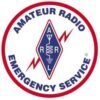SAF-102
Heat Advisory
Updated 02 Aug 2025 by Paul Smith, K5PRS
Here in the Houston Gulf Coastal area, we certainly are no strangers to the extreme summertime conditions of high temperatures and high humidity levels. Practicality dictates that we be aware of and take preparations to deal with these adverse weather conditions.
“A heat advisory is a notice issued by local offices of the National Weather Service. These advisories alert residents to exceptionally high temperatures which are often aggravated by high humidity. Prolonged exposure to these conditions without taking adequate precautions can result in heat stroke which can pose a threat to human life.
Sweating, evaporative cooling, is the body’s mechanism that helps to control body temperature to adjust to summer’s high heat and humidity levels. Even dry, hot air can become a serious problem but as the air becomes moist due to the onset of high relative humidity, evaporation becomes inhibited and adequate cooling becomes even more of a challenge.
Terms you should know are:
“HEAT CRAMPS: painful, involuntary muscle spasms that occur during or after intense physical activity in hot environments. They are one of the mildest forms of heat-related illness, but they can be an early warning sign of more serious conditions like heat exhaustion or heatstroke if not addressed.
HEAT EXHAUSTION: a heat-related illness that occurs when the body overheats and can’t cool itself effectively, usually after prolonged exposure to high temperatures, physical exertion, or inadequate hydration. It’s less severe than heatstroke, but it’s a warning sign that your body is struggling to regulate its core temperature — and it can progress to heatstroke if not treated.
HEAT STROKE: the most severe form of heat-related illness and is a life-threatening medical emergency. It occurs when the body’s core temperature rises above 104°F (40°C) and the body’s heat-regulating systems fail. If untreated, it can cause organ failure, brain damage, or death within minutes.”
-ChatGPT
When we are unable to maintain proper body temperature, the symptoms of heat cramps, heat exhaustion and heat stroke begin to manifest themselves. The term ‘Heat Index‘ was developed to provide guidelines. The Heat Index is derived from that combination of temperature and humidity that describes “how hot it feels” and the expected symptoms from that heat range. The ‘Heat Index’ value is calculated as if you are standing in a ventilated, shady place so the following table has to be evaluated based on those conditions, especially humidity and duration.
- 80 to 90 degrees F: Could lead to earlier than expected fatigue making you prone to accidents.
- 90 to 105 degrees F: Represents the possibility of heat cramps and heat exhaustion.
- 105 to 130 degrees F: Can lead to heat cramps, heat exhaustion and to a possible heatstroke.
- Greater than 130 degrees F: Can quickly become fatal if exposure persists without proper precautions.
To help you plan on working or playing during the summer, an expanded Heat Index chart that includes humidity ranges and exposure duration is available in SAF-102a.
To reduce potential health related problems from high temperatures and humidity:
- Restrict strenuous physical activities to early morning or late evening hours.
- Wear lightweight loose fitting and light colored clothing.
- Wear a hat to shield your head from the sun and use sunscreen to minimize the risk of sunburn.
- Your body may loose as much as one gallon of water per hour through perspiration and that also lowers your body’s electrolytes. Drink plenty of fluids to stay hydrated and take salt tablets or add electrolytes. This cannot be stressed enough…you will BE dehydrated before you FEEL thirsty! Watch your urine; OFTEN and yellow is good and ORANGE is bad.
- Avoid alcohol and caffeinated beverages as they will increase the rate of water loss via the urinary system and reduce sweating thus increasing the risk of heat exhaustion or stroke.
- Take breaks out of the heat to allow your body to cool. Take your temperature if possible and keep your core below 102 degrees.
- Spend as much time as possible in air conditioning, under the cooling effects of a fan or at least out of direct sunlight.
- Children, the elderly and people with chronic ailments are most at risk during periods of extreme heat so watch them closely for early signs of heat illness.
- Your pets can succumb to the effects of excessive heat. Ensure that they have plenty of fresh drinking water and a shady place that gets good air circulation to keep their body temperatures down.
- Never leave pets or children in automobiles even for short stops as the interior temperatures may quickly climb to the 150 degree F range.
- A tent in the sun can get dangerously hot…a canopy, which can be fashioned from a tarp or a poncho, is a better option.
In summary, dress for the occasion, take breaks to cool off, monitor your temperature if possible, watch your urine, dark or orange is bad and drink LOTS of fluids with electrolytes.
That concludes tonight’s training. Are there any questions, comments or suggested additions to this material?
Thanks, this is (callsign) clear to net control.
————————
Send corrections, modifications, updates or suggestions to k5prs@aol.com
